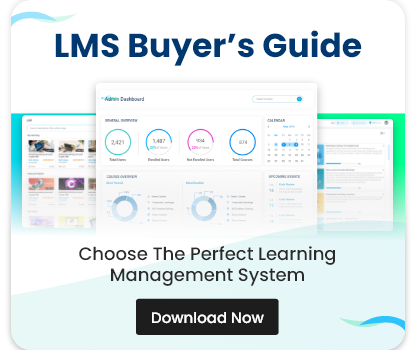You’ve spent hours trying to get your SCORM packages to upload properly. You’ve wished for richer learner-data beyond just “completed / not completed.” You’ve clicked through LMS dashboards, tried plugins, wrestled with errors. I get it. When your goal is to deliver great learning and really track what people are doing, you need the Best Free LMS Software with SCORM and xAPI Support—something that doesn’t waste your time, yet gives you powerful features.
In this post, we’ll explore five LMSs that are free (or at least have strong free or trial plans), support SCORM and xAPI (or Tin Can), and help you avoid common headaches. By the end, you’ll have a clearer idea which LMS might work best for your context and how to set it up so you don’t feel stuck. Let’s dive in.
Start Scaling Your L&D Today with Free Tools
Unlock the Potential of Free Tools to Revolutionize Your Learning Strategy!
What Makes an LMS the Best Free LMS Software with SCORM and xAPI Support for You
Before reviewing options, here are the pain points you probably know well—and what criteria will help you avoid them.
- Frustration: SCORM packages that don’t upload, or once uploaded, don’t report correctly (no completion, zero scores).
- Lack of insight: You want more than “passed/failed”—you want to know how learners interact, where they drop off, maybe even offline or social learning. That’s what xAPI offers.
- Technical overload: Some LMSs need you to install, configure, host, maintain server, fix compatibility issues. That can feel overwhelming.
- Limited free plans: Sometimes the “free” version is so locked down that SCORM or xAPI support is missing entirely, or you hit user-limits fast.
So: you need an LMS that gives you real SCORM support, genuine xAPI/Tin Can capability, a usable free tier or trial, and manageable complexity.
Top 5 LMS Picks That Handle SCORM + xAPI Well (Free or Low Cost)
1. Paradiso LMS
- What you get: Paradiso offers a free plan that supports xAPI for advanced learning tracking.It also supports SCORM, AICC, Tin Can (xAPI), meaning your SCORM packages can be uploaded, used, tracked.
- Why it could reduce your headaches: Because Paradiso makes both SCORM and xAPI part of its feature set—even in free or trial plans—so you don’t have to cobble together multiple tools. Plus they provide dashboards and reports.
- What to watch out for: The free plan (or trial) may limit number of users, features, or certain customizations. If your course content is heavy (lots of media, large SCORM modules), performance or mobile compatibility could be impacted unless you pick hosting or server plan appropriately. Also, even with Paradiso, some “extras” (deep customization, white-labeling, support) are usually paid.
- Best if: You want something fairly fast to deploy, want both SCORM + xAPI, and want to test with a limited group before going bigger. Also good if you prefer having both standards in one system without building integrations yourself.
🚀 Ready to See Paradiso LMS in Action?
Let's show you how Paradiso LMS can work for you.
🎯 Get a Free LMS Now2. Moodle
- What works well: Open source, mature, widely used. Excellent SCORM support (1.2 and 2004), many plugins. With additional modules or plugins, you can enable xAPI / Tin Can support.
- Extra effort needed: You’ll likely need to self-host or use a hosted Moodle, install and configure plugins, set up an LRS (Learning Record Store) if you want full xAPI tracking.
- Best if: You or your team are comfortable with some technical setup & maintenance; you want maximum flexibility & control; you may scale up later.
3. Open edX
- What works well: Strong platform for large scale or blended programs. Supports content standards, many tools for analytics, etc.
- What to check: SCORM support is often via extensions; xAPI may need custom work. More overhead in setup & hosting.
- Best if: You’re planning to deliver to many learners, or want a structure similar to MOOCs; or you have access to technical resources.
4. ILIAS
- What works well: It has strong SCORM support. For organizations that need compliance and formal assessments, ILIAS is solid.
- What to check: xAPI integration may require additional tools or customizations. UI and user experience might feel more utilitarian.
- Best if: You’re more concerned with compliance, formal learning outcomes; maybe in academic or regulated training environments.
5. Chamilo
- What works well: Simpler, lighter, easier to set up. Good for smaller teams / smaller course catalogs. SCORM works; basic tracking is usually reliable.
- What to check: The xAPI support may be limited or require external LRS integration; fewer bells & whistles out of the box.
- Best if: You want something lightweight, fast to deploy, with less overhead. Good for pilot programs or when content is straightforward.
Actionable Steps: How You Choose & Set Up the Right LMS
1. Sketch out your user scenario
• How many learners will use it now? In six months?
• What devices will they use (mobile, tablet, desktop)?
• What content do you already have? (SCORM packages? Videos? PDFs?)
• How much detail do you need from tracking (just completion? quiz scores? click-path)
2. Try one LMS first
If you can, set up a small pilot group with Paradiso Free LMS (or Moodle if you’re familiar). Upload a SCORM course, test completion tracking and grading. Then generate xAPI data (via LRS or via the LMS’s dashboards) for simple interactions. See how easy or hard it is.
3. Check user experience and support
Even if the LMS has all the technical compliance you want, if the learner experience is bad (slow loading, hard navigation), or the admin side is confusing, things will drag. Prefer systems with active user communities, solid documentation, free-trial/demo support.
4. Plan for scaling & cost
5. Set up good tracking from the start
6. Collect feedback and adjust
After using with real learners, ask them (and yourself) what’s working and what’s not. Is the SCORM content loading smoothly? Are xAPI reports giving meaningful insight? Based on that, adjust: maybe switch LMS, upgrade, change content, or modify which tracking events you use.
Start smarter training today with the best free LMS—SCORM and xAPI ready
Launch your courses now - track every click with free LMS tools supporting SCORM and xAPI
Common Mistakes (and How to Avoid Them)
- Using a free LMS without checking if SCORM version (1.2 vs 2004) matches your content → always test your content in the LMS before rolling out.
- Expecting xAPI to “just work” without an LRS or configuration → you usually need a Learning Record Store, even if built-in, to store xAPI statements. Confirm that.
- Overloading learners’ devices with heavy SCORM modules (large media files) → test mobile performance; consider breaking content into smaller chunks.
- Not thinking ahead about exports or backups of learner data → always confirm you can export reports, raw xAPI statements if needed, especially if LMS is free or cloud-based.
Why Paradiso LMS Might Be One of Your Best Choices
Because Paradiso offers both SCORM and xAPI (Tin Can) in its feature set, including for its free or trial usage, it can save you from stitching together different tools. You could upload your SCORM content, track completion, and also see learner behaviour via xAPI, all inside one ecosystem. This reduces friction, lowers the chance of compatibility issues, and simplifies reporting. If you want a quicker start without jumping through too many integration hoops, Paradiso is very compelling.
Conclusion & Call to Action
When you’re trying to find the Best Free LMS Software with SCORM and xAPI Support, the goal isn’t to get perfect immediately, but to get a solution that reduces your pain, gives you meaningful data, and lets you grow without needing to re-build everything.















